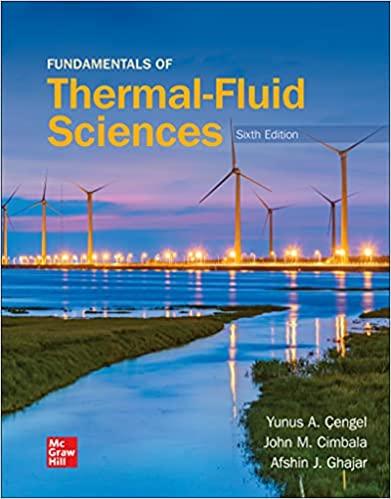Question
DO NOT USE POSTED SOLUTION IT IS WRONG AND ILL REPORT YOU FOR SPAM IF YOU USE IT POST CODE AND PLOTS 6th time posting
DO NOT USE POSTED SOLUTION IT IS WRONG AND ILL REPORT YOU FOR SPAM IF YOU USE IT POST CODE AND PLOTS
6th time posting READ THE QUESTION
Use polmyath post code and plot !!!!
The following two liquid phase reactions A + B --> D (desired product) A + B --> U (undesired product) are carried out in a perfectly insulated CSTR. The desired reaction is first order in A and zero order in B, while the undesired reaction is zero order in A and first order in B. Inlet: Species B enters at an inlet temperature of 50C. CBinlet = 1 mol/dm3. The molar flow rate of B entering the reactor is 10 mol/min. No A is coming in the inlet. Initial: Species A and B are initially in the reactor at a temperature of 50C. The initial value of liquid V is 100 dm3. CAinitial = 5 mol/dm3. CBinitial = 1.2 mol/dm3. The following data apply (neglect temperature dependence of the heat capacities and heats of reaction): CpA = 20 cal/mol*K ; CpB = 30 cal/mol*K ; CpD = 50 cal/mol*K ; CpU = 40 cal/mol*K For reaction 1 the heat of reaction at the operating temperature is: -3000 cal/mol of A For reaction 2 the heat of reaction at the operating temperature is: -5000 cal/mol of A k1 = 10exp(-2000/T) min-1 ; (T in Kelvin) k2 = 20exp(-3000/T) min-1 ; (T in Kelvin) Plot selectivity as a function of time + concentrations and temperature
Step by Step Solution
There are 3 Steps involved in it
Step: 1

Get Instant Access to Expert-Tailored Solutions
See step-by-step solutions with expert insights and AI powered tools for academic success
Step: 2

Step: 3

Ace Your Homework with AI
Get the answers you need in no time with our AI-driven, step-by-step assistance
Get Started


